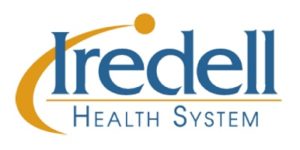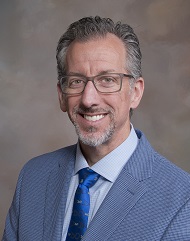
Special to Iredell Free News
Osteoporosis is a major public health threat affects more than 10 million Americans age 50 and above, and nearly 44 million are at high risk, according to the Bone Health and Osteoporosis Foundation.
What exactly is this life-altering disease?
“Osteoporosis means porous bone and is sometimes called ‘thinning of the bones’ or ‘brittle bones.’ It’s a condition where the bone weakens and is more prone to fracture, even with a minor injury,” said Anthony Elkins, a physician at Iredell Primary Care, located in Mooresville.
As National Osteoporosis Awareness and Prevention Month draws to a close, it’s important to understand your risks, take steps toward prevention, and, if necessary, seek treatment early.

Your bones are always undergoing remodeling — replacing old bone with new bone. According to Elkins, the average bone completely replaces itself every seven years. This remodeling process involves a careful balance of removing old bone by osteoclast cells and forming new bone by osteoblast cells. Osteoporosis occurs when the breakdown of bone exceeds the production of new bone.
Unlike many common illnesses and diseases, osteoporosis has no symptoms. It can sneak up on you until your bones are so fragile that you suffer a fracture, called a fragility fracture.
According to Elkins, osteoporosis most commonly affects your hip bone and lumbar vertebrae, or bones in your lower back.
“One who suffers a hip fracture generally will require hip surgery. This may require time in a wheelchair and may take up to six months until the patient is able to bear weight as usual again,” said Elkins.
The Risks
Being a female of menopausal age is the most common risk factor for osteoporosis.
“The loss of the estrogen hormone is thought to contribute to accelerated bone loss, especially in the first five years after menopause,” said Elkins.
And though about 80 percent of Americans with osteoporosis are women, this does not mean men are
in the clear. Men with low testosterone levels are also at increased risk.
According to Elkins, other risk factors for developing osteoporosis include:
• Having a small body frame.
• Being underweight.
• Having a family history of the disease.
• Suffering from certain medical conditions like hyperthyroidism and hyperparathyroidism.
• Overusing medications such as thyroid hormone medications, oral steroids like prednisone, and some seizure medications.
Certain races and ethnicities are more susceptible to osteoporosis. Asians are most at risk, followed by Caucasians and Hispanics. African Americans are at least risk.
Preventable risk factors include smoking, alcohol intake of more than three drinks per day, and a sedentary lifestyle.
Prevention
Elkins recommends patients at risk for osteoporosis quit smoking, minimize alcohol use, and get regular physical activity, especially weight-bearing activities such as walking, running, weightlifting, yoga, tai chi, or any other activity that requires stamina and balance.
“Weight being placed upon the bones seems to promote bone growth and strengthening. In contrast, while swimming is a great exercise for the heart and is low impact, it is not weightbearing and thus does not help to prevent osteoporosis,” he said.
If you are at risk for osteoporosis, it’s essential to speak with your primary care provider and make annual exam appointments.
“I typically discuss osteoporosis at the annual physical exam with my female patients over 50, as they are at the highest risk. Other patients who have risk factors would warrant an individualized discussion and treatment plan,” said Elkins.
Osteoporosis may be diagnosed with a special type of x-ray called a bone density scan, or DEXA scan. It is quick and painless with minimal radiation exposure.
Treatment
Early treatment is key to osteoporosis and may slow or reverse bone loss. According to Elkins, there are multiple approaches to treat osteoporosis, and you should discuss these options with your provider.
Prescription medication designed to strengthen bones may help patients who are at high risk for fracture. These medications may be pills taken once a week, injections taken every six months,
or an IV infusion performed once a year.
“All medications have benefits and risks, and I look at my patients’ entire health situation in order to make a personalized recommendation,” said Elkins.
Life after an osteoporosis diagnosis
Though an osteoporosis diagnosis may make you feel uneasy, with a little extra care and attention, you can still live a full, active life with this disease.
The first step is making an appointment with your provider and following their treatment or medication plan. Secondly, it’s crucial to reduce your risk of falling and sustaining a fracture.
To reduce fall risk inside your home, Elkins recommends the following:
• Avoid using area rugs, or ensure they are secured down to the floor
• Make sure electrical cords are out of the way
• Ensure hallways and stairways are well lit
• Have a night light in the bedroom or bathroom for those late-night bathroom trips
When you’re outdoors, make sure to avoid slick areas and wear rubber-soled shoes.
Also, because the most profound complication of osteoporosis is a fracture, improving your balance and stamina is key. Having osteoporosis shouldn’t limit your ability to get around.
Weight-bearing and balance exercises can help strengthen your bones and avoid falls.
“Osteoporosis is a complex topic that patients should discuss with their physician prior to taking any supplement or medication. Care should be taken when researching health topics on the internet as the information is often unreliable or erroneous,” said Elkins.
He recommends that patients wanting to learn more about osteoporosis go to the Bone Health and Osteoporosis Foundation website at www.nof.org.
LEARN MORE
Elkins is a physician practicing at Iredell Primary Care, located at 114 Gateway Boulevard, Suite B, in Mooresville. He is accepting new patients of all ages. If you would like to schedule an appointment with Dr. Elkins, please call 980-435-0406.
About Iredell Health System
Iredell Health System includes Iredell Memorial Hospital; Iredell Mooresville; Iredell Home Health; Iredell Wound Care & Hyperbaric Center; Community and Corporate Wellness; Occupational Medicine; the Iredell Physician Network and more. Iredell Memorial Hospital is the largest and only nonprofit hospital in Iredell County. The comprehensive healthcare facility has 247 beds; more than 1,700 employees; and has 260 physicians representing various specialties. Centers of excellence include Women’s and Children’s; Cardiovascular; Cancer; Surgical Services and Wellness & Prevention. The Health System’s newest campus, Iredell Mooresville, is home to the area’s only 24-hour urgent care facility, as well as an ambulatory surgery center, imaging center, rehabilitation services, and physician practices. The mission of Iredell Health System is to inspire wellbeing. For a comprehensive list of services and programs, visit www.iredellhealth.org



